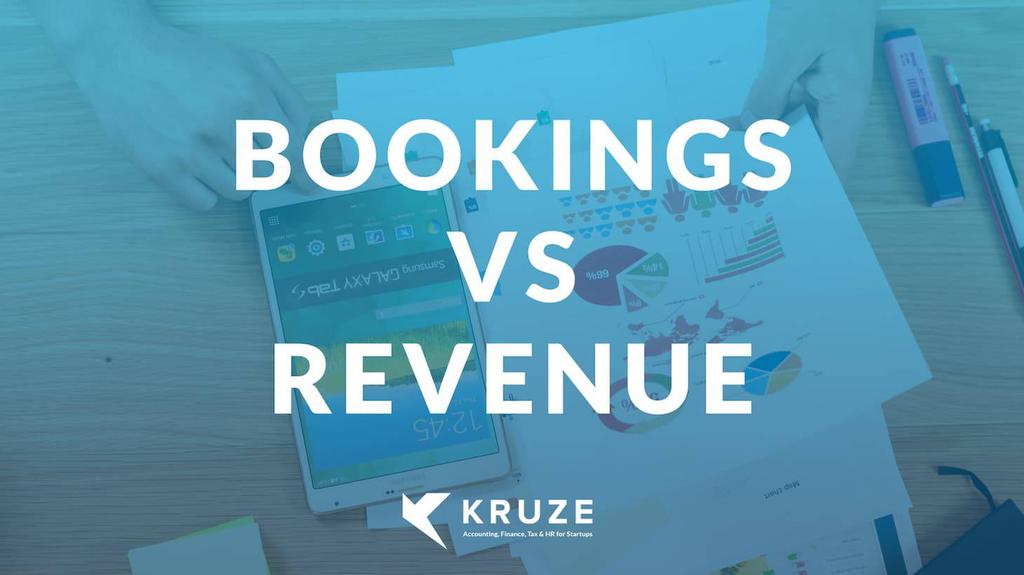
From our perch as accountants to close to almost 200 venture-funded startups, we may be seeing some signs of a coming economic slowdown. Here is our advice on what startup founders should do to prepare for a recession.
Before we get started, we hope that we are wrong. Recessions hurt.
What may be causing a tech slow down
The press is doing a great job highlighting the various macroeconomic issues that are impacting the US and the global economies. Beyond those macro problems, we see some issues specific to the technology market.
The bursting of the late-stage bubble is likely to trickle downstream to early-stage companies. WeWork is the most visible of these valuation decreases. In January it was valued at $47 billion by Softbank, and in September before it pulled its IPO, and now it has just recapitalized at only an $8 billion valuation. In the ride-sharing space, the two unicorns Uber and Lyft, are trading at less than their last private company valuations (Uber was valued at $76 billion as a private company and is now at $56 billion; Lyft was $15 billion privately but is now “only” $15 billion). And Peloton’s IPO hasn’t been a huge success, with the stock trading down from its IPO value of $8 billion to something closer to $6 billion today (although this is up from its last private valuation of $4 billion).
Fred Wilson has an excellent piece about what he thinks is driving this decrease in late-stage valuations, mainly that a lot of these companies do not have very strong gross margins. To further extrapolate what we think many public market investors might be thinking - it’s hard to build a cash flow positive, sustainable business with low gross margins. You may never get enough gross profit to cover your operating costs (in particular your sales and market costs, since many of these companies need to constantly invest in S&M to keep revenue growing).
Ok, but how does this impact early-stage startups? If your company isn’t selling a lot of product to Uber, does it really matter what their stock does?
Unfortunately, the rising tide does lift all boats, so as later stage companies become more valuable, VCs are willing to get more aggressive funding and valuing earlier stage startups. If the spigot turns off at the late stage end of the market, it will quickly flow down to early stage companies. We saw this in the 2000 and 2008 downturns. The best early stage companies were still able to raise, but at lower valuations than they might have earlier. (That statement may have a bit of survivorship bias in it, as who knows what great companies were NOT able to raise money during the last downturns.)
What signs Kruze Consulting is seeing that there is a slowdown
We see a large percent of our clients proactively raising capital to prepare for a slowdown in the financing market. Our clients’ VCs are instructing them to shore up the balance sheets with early fund raises. Today we have the highest percentage of clients with over 12 months of runway as we’ve seen - close to half of our clients now have a year or more of runway, basically up by over 100% from this time last year.
Scaling revenue (and funding) without scaling burn
Our CFOs and FP&A teams are also working closely with a number of fast growing client to help them keep their burn grow below their revenue growth. This is partly at the direction of the companies’ boards, but also partly from some pretty smart CEOs. This time last year, when a client raised capital, they usually quickly increased spending - usually much faster than their topline revenue growth. Today, many clients are trying to have revenue (and gross profit) growth outpace overall expense growth - effectively cutting their burn rate as they scale.
This behavior is pretty different than what we’ve all gotten used to over the past few years, where VCs were asking portfolio companies with high revenue growth to invest even more and more in operating expenses like sales, marketing and development. The growth at all costs, take share at all costs mentality seems to be changing in the early-stage tech world. Benchmarking our clients average cash balance vs. the burn, over the past year our client’s average cash balance is up 60%, while burn is only up 20%. In previous years, burn usually moved up pretty closely and quickly as cash increased, so this is a pretty major change that started Q1/Q2 and accelerated into Q3 of this year.
Maybe it’s not a downturn
We could be wrong, maybe a recession is not about to happen. We all hope we are wrong, because recessions are miserable. Some of the signs that we see that might make us eat our words would be that:
- Revenue growth is strong; an exciting number of our clients are clearly on IPO pace revenue growth
- Many companies are enjoying great up-rounds, raising capital at attractive valuations
- Public companies continue to acquire our companies; we are still seeing one or more of our clients getting acquired each and every month for high valuations
How can your startup prepare for a recession in 2020?
Let’s say you are as concerned as we are that a recession is coming. How should you prepare your startup for a downturn? Here is what we are advising.
- Focus on what you can control. It’s normal to worry about everything, but try hard not to waste too much mental energy worrying about things that are outside of your control. For example, you can’t control if a major client goes out of business, but you can choose which industries you sell into.
- Quality revenue growth will likely trump almost all problems. VCs are still going to want to fund companies that are growing. If you are growing like crazy you can probably keep on the gas. This assumes that you are not overspending on sales and marketing to hit that growth curve. Additionally, VCs are becoming increasingly aware that not all revenue is the same - gross margins matter. It feels like it will become increasingly challenging to raise funding if your startup has really low gross margins. If you are growing fast, talk with your investor about your margins, and make sure you are going down a path that is attractive. Finally, understand the quality of your clients (and keep collecting those receivables).
- Have a legit cash flow model. Use your model to manage your spending, and make adjustments based on market/corporate conditions. The end of the year is a great time to put together a goal-focused budget with your team. We’ve got several financial model templates on our website that you can download at no charge to get started. This is very important, as you need startup financial projections so so that you can understand the impact of your spending decisions on your cash position and cash out date.
- Set up spending milestones. Don’t just let your team increase their spending. Use a financial model to have a plan for when increases in spending are to occur, and “unlock” that additional spend, such as more hires, at particular achievement milestones. If you slip on the “gate” delay the hiring/stepping up of the spend. For example, if you are going to hire #3 and #4 sales people, wait until you have proof that your existing reps are able to achieve their targets. You may also want to wait to make sales hires until your churn rate is below a particular metric. For startups still in the development phase, you can choose particular product milestones as your “gates.”
- Have a targeted burn rate. For revenue generating companies, an alternative to the milestone based burn increase is to have a constant, targeted burn rate. As revenue grows, expenses can grow. But each new investment has to be “earned” by increasing revenue. If your startup is revenue generating, you’ll want to discuss this with your investors, as they may have a different idea on how you should use your revenue growth. Even better, let your revenue growth outrun your expense growth.
- Outsource what you can. Outsourcing preserves your ability to cut without impacting employee morale. You definitely don’t want to take this piece of advice to the extreme; understand what should and shouldn’t be outsourced. The best activities to outsource are non-core, tedious tasks like bookkeeping, basic regulatory compliance, payroll, many HR tasks, office space management, legal, receptionists, and CRM administration. Yes, Kruze offers outsourced bookkeeping and compliance, and we’ll help you get your outsourced payroll going too. We support companies from zero revenue to $100 million in revenue. Other functions that we regularly see outsourced include software development, marketing activities, UX, sales training and more. These types of activities require a lot more thought before outsourcing; you’ll have to decide what is truly core to your business. Another way to think through outsourcing something like marketing is to think through your stage and milestones, and decide if you are in a position where you are ready to commit to the full time hires and resources, or if you are at early enough of a stage where it makes sense to get a best-in-class consulting.
- Keep a firm hand on employee spend. The best way to do this is through culture and systems. Your culture should be of thoughtful spending. You don’t want a $175,000 a year developer agonizing for half a day over a $5 tool, but you do want a team that is respectful of the company’s bank account. Good systems can make this easier. Two that we’ve had a lot of success with recently are Brex and Procurify. Brex is a startup-focused credit card that has tools to make managing employee spending a lot easier. And Procurify is a cloud-based procurement software which helps founders manage company spending. Best to get employee spend in a good place before a downturn really hits. Again, you can take this too far - the right perks are a great way to affordably motivate teams.
- Focus on efficient operations. Keeping your team on schedule, delivering tight feature set additions to products or pacing on R&D is important, so you don’t burn capital before you hit your important milestones. Measuring sales and marketing efficiency is also important; make sure you have a method to grade your new sales reps and new marketing channels.
- Raise capital when you can, not when you need to. As we mentioned earlier, a massive percent of our client base has recently raised venture funding - even though many of these companies were nowhere near running out of cash. If you can raise equity on attractive terms you should consider doing so. Many of our top clients have raised a bit more than they probably need, as an insurance policy. The companies with the best revenue and expense predictability can also get venture debt, which is a less dilutive means of putting cash on the balance sheet.
- If you have to cut, cut deeply enough so that you don’t have to do it again. Use a financial model to know how deep you need to go to give yourself enough time to get to the next, big growth milestone. Repeated cuts can dramatically reduce your cash out date, because you’ll keep your spending at a higher level for longer. Plus, repeated cuts can really impact employee morale, meaning your best employees (those you want to retain) may jump ship because they think they are going to be next. Doing reductions is a horrible experience for you and for your team, so if you need to do it get it done and move on. Read our guide to downrounds to understand what happens if you need to raise capital at a lower valuation.
Need help understanding your finances, managing your burn or predicting your cash flow? Reach out today for a consultation!



